12 Permaculture Principles for a Self-Sufficient Garden
- May 14, 2024
- 0 comment
Modern life makes achieving a sustainable, self-sufficient garden seem daunting and complex. Permaculture offers a straightforward, holistic approach. By following its 12 principles, you can create a resilient, thriving garden that works with nature. Gardeners worldwide have transformed their spaces using permaculture. Techniques like rainwater harvesting and composting reduce external dependencies, while biodiversity enhances natural pest control and boosts garden health.
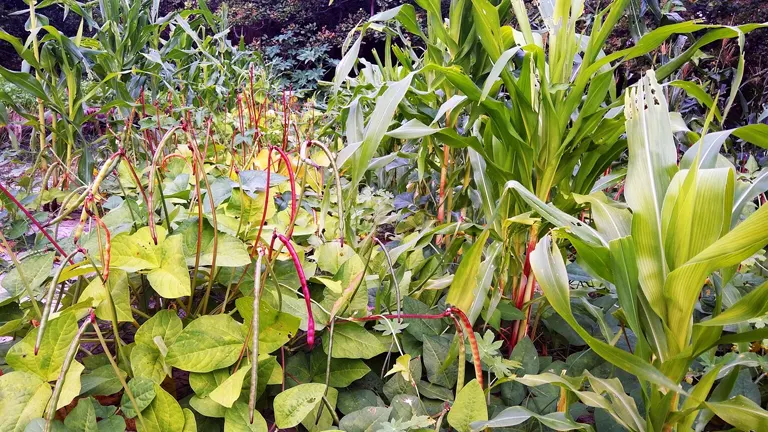
Permaculture, a concept developed in the 1970s by Australians David Holmgren and Bill Mollison, merges “permanent” and “agriculture.” It’s a design approach that creates sustainable, self-sufficient systems by mimicking natural ecosystems. These principles are guidelines, not rules, adaptable to various aspects of life, from gardens to entire neighborhoods.
The Twelve Pillars of Permaculture
Principle 1: Observe and Interact
Take time to truly understand your garden’s patterns. Spend a few minutes each day observing how the sunlight moves, which plants flourish, and which ones struggle. Keep a journal to track these insights. Noticing that a plant isn’t doing well in the shade? Move it to a sunnier spot. Spot an area where water collects? Consider adding a rainwater catchment system. This continuous observation helps you make smart, informed changes, turning your garden into a thriving ecosystem. Simple tweaks, based on careful observation, can make a big difference.
Principle 2: Catch and Store Energy
Make the most of local resources to reduce dependence on external inputs. Set up a DIY rainwater system to collect and store water. Add organic matter, like compost or mulch, to enrich your soil. These practices boost your garden’s resilience by using what nature provides, ensuring your plants have the nutrients and water they need without relying on outside sources. Simple steps like these make your garden more self-sufficient and sustainable.
Step-by-Step Guide to Rainwater Harvesting
Materials Needed: Gutters, downspout, rain barrel, overflow pipe, filter/mesh, and a faucet.
Installation:
- Attach gutters to the lowest part of your roof to collect rainwater.
- Connect the gutters to a downspout that directs the water into a rain barrel.
- Install a filter at the top of the rain barrel to keep out debris and mosquitoes.
- Fit an overflow pipe to handle excess water during heavy rainfall.
- Ensure the rain barrel has a faucet at the bottom for easy access to the water.
Use the stored rainwater for irrigation during dry periods, significantly reducing reliance on municipal water.
Principle 3: Obtain a Yield
Look beyond just harvesting crops. Your garden can provide food, recreation, and beauty. Grow flowers for their looks, or share seedlings with friends. Even pollinators benefit from the nectar and pollen your garden offers. Enjoy the multiple rewards your garden brings, from fresh produce to a peaceful retreat.
Principle 4: Apply Self-Regulation and Accept Feedback
Take responsibility for your actions and be open to feedback. Gardens are excellent learning spaces. If something goes wrong, adjust and learn from it. Mistakes are part of the process. Remember, many of the world’s problems can be tackled in a garden, starting with your own. Embrace the journey and continuously improve.
Principle 5: Use and Value Renewable Resources and Services
Make your own liquid fertilizers from plants like comfrey instead of buying synthetic ones. Plant perennials that come back year after year. Encourage wildlife to promote natural services like pollination and pest control. Valuing these renewable resources helps maintain a healthy, sustainable garden.
Step-by-Step Guide to Making Plant-Based Fertilizer
Process:
- Fill the bucket half full with comfrey leaves.
- Top up with water and cover the bucket.
- Let the mixture sit for 3-4 weeks; the comfrey will decompose, releasing a nutrient-rich liquid.
- Dilute this liquid at a 15:1 (water to comfrey mix) ratio for use as a potent natural fertilizer.
Principle 6: Produce No Waste
Find ways to reuse, recycle, or repurpose everything. Turn wood offcuts into bug habitats instead of burning them. Compost kitchen scraps and garden waste. Seeing waste as an opportunity helps create a closed-loop system, enhancing your garden’s resilience and sustainability.
Step-by-Step Guide: Implement a Three-Bin Composting System
Setup:
- Build or purchase three bins and place them side by side.
- Start filling one bin with organic waste—kitchen scraps, yard waste, etc.
- Once full, let it decompose and start filling the second bin.
- Rotate as each bin fills, providing continuous compost for your garden.
Principle 7: Design from Patterns to Details
Begin with a broad overview of your garden and then focus on the specifics. Observe your movement patterns and design your garden to match. For instance, plant frequently used herbs and salads along your regular paths to save time and effort. By planning from patterns to details, you create a more efficient and enjoyable garden space.
Principle 8: Integrate Rather Than Segregate
Combine garden elements for greater efficiency. Use compost pathways or mix flowers with vegetables for natural pest control and added beauty. Think of your garden as a team where every part works together seamlessly, creating a harmonious and productive environment.
Principle 9: Use Small and Slow Solutions
Start small and build gradually. Instead of creating many raised beds at once, begin with one or two. Use gentle techniques like no-dig gardening to naturally improve soil health. Small, steady steps lead to sustainable and lasting progress.
Principle 10: Use and Value Diversity
Plant a variety of crops and use different gardening techniques. Mixing textures, colors, and flavors not only makes your garden more beautiful but also boosts its resilience. Diversity helps prevent pests and diseases, ensuring a healthier garden overall.
Principle 11: Use Edges and Value the Marginal
Utilize underused spaces creatively. Transform awkward spots into valuable areas, like a fermentation station or a biodiversity haven. Maximize growing space by using the edges of raised beds. Embrace these marginal areas to enhance your garden’s productivity and diversity.
Principle 12: Creatively Use and Respond to Change
Stay flexible and adaptable. View challenges as opportunities. For example, if blight affects your potatoes, switch to blight-resistant varieties or grow them in containers. By adapting to changing conditions, you minimize impact and boost your garden’s success.
Final Thoughts
Permaculture is not a rigid rule book but a mindset toolkit. Start with two or three principles that resonate with you and build from there. This approach helps optimize your space’s potential without becoming overwhelming.
FAQs
- What is permaculture and how does it differ from traditional gardening?
Permaculture is a sustainable design approach that mimics natural ecosystems to create self-sufficient systems. Unlike traditional gardening, which often relies on external inputs and monocultures, permaculture focuses on biodiversity, renewable resources, and working with nature to enhance resilience and sustainability. - How can I start implementing permaculture principles in my small urban garden?
Start small and build gradually. Begin by observing your garden’s patterns and interactions, set up a rainwater harvesting system, and add compost or mulch to enrich your soil. Integrate flowers with vegetables to attract pollinators and use vertical space with trellises or containers. - What are the benefits of observing and interacting with my garden regularly?
Regular observation helps you understand your garden’s unique patterns and needs. By interacting with your garden daily, you can make informed adjustments, identify problems early, and optimize plant placement and resource use for better growth and resilience. - How do I set up a DIY rainwater harvesting system for my garden?
- To set up a DIY rainwater harvesting system:
- Choose a location near a downspout.
- Place a rain barrel under the downspout to collect water.
- Install a screen to filter debris.
- Attach a hose or spigot to the barrel for easy water access.
- Consider adding overflow outlets to prevent spillage.
- To set up a DIY rainwater harvesting system:
- Can permaculture help me reduce garden waste effectively?
Yes, permaculture promotes zero waste by encouraging the reuse, recycling, and repurposing of materials. Compost kitchen scraps, use garden waste as mulch, and repurpose old materials like wood and bricks to create garden structures or habitats for beneficial insects. - What are some practical ways to use and value renewable resources in gardening?
- Practical ways to use renewable resources include:
- Making liquid fertilizers from plants like comfrey or nettles.
- Planting perennials that return each year.
- Encouraging wildlife to promote natural pollination and pest control.
- Using solar energy for garden lighting or small water features.
- Practical ways to use renewable resources include:
- How can integrating flowers among vegetables improve pest control?
Integrating flowers among vegetables attracts beneficial insects like bees and ladybugs, which help with pollination and natural pest control. Flowers can also confuse pests, reducing their ability to target specific crops and minimizing the need for chemical interventions. - What is no-dig gardening and how does it benefit soil health?
No-dig gardening involves layering organic matter on top of the soil rather than tilling it. This approach preserves soil structure, enhances microbial activity, and improves water retention. It reduces erosion, promotes healthier root systems, and minimizes weed growth. - How can I creatively use and respond to changes in my garden environment?
Stay flexible and adaptable. If faced with a challenge like blight, switch to resistant crop varieties or use containers to isolate problems. In drought conditions, mulch heavily to retain moisture and install efficient irrigation systems like soaker hoses. Embrace changes as opportunities to innovate and improve your garden. - What are some examples of using marginal spaces effectively in a permaculture garden?
- Examples of using marginal spaces include:
- Turning awkward or unused areas into valuable spots, like a fermentation station for composting or a habitat for biodiversity.
- Using the edges of raised beds to grow trailing plants or adding trellises for vertical gardening.
- Planting shade-tolerant plants in areas with less sunlight to maximize all available space.
- Examples of using marginal spaces include:
We’d love to hear from you! Share your thoughts, experiences, and any questions in the comments below. Let’s grow together and learn from each other. Happy gardening!

Kristine Moore
Forestry AuthorI'm Kristine Moore, a seasoned garden landscaping professional with over 30 years of experience. My extensive career has been dedicated to transforming outdoor spaces into stunning, sustainable landscapes. With a deep understanding of horticulture, design principles, and environmental stewardship, I have become a respected figure in the field, known for creating harmonious, visually appealing, and eco-friendly gardens. My commitment to excellence and continuous learning in landscaping trends and techniques has solidified my reputation as an expert in garden design and implementation.

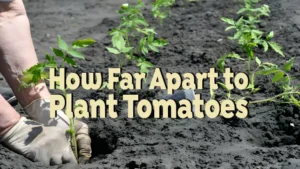
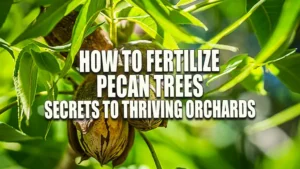


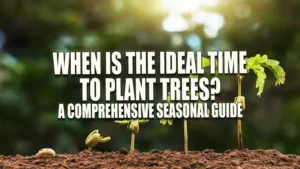
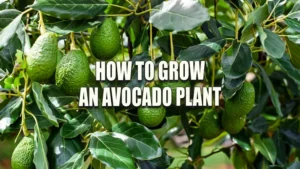



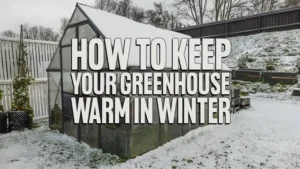


Leave your comment